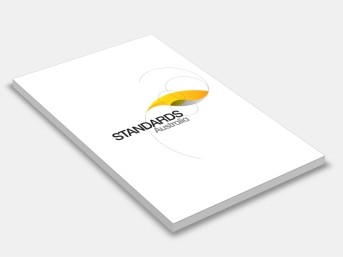AS 1668.2-1991 The use of mechanical ventilation and air-conditioning in buildings, Part 2: Mechanical ventilation for acceptable indoor-air quality
Standards Australia
This Standard was prepared by the Standards Australia Committee on Mechanical Ventilation and Air-conditioning to supersede AS 1668 – 1980, SAA Mechanical Ventilation and Air-conditioning Code, Part 2: Ventilation requirements.
The main technical changes are as follows:
(a) Outdoor airflow rates are increased for most enclosures.
(b) Reduction in outdoor airflow rates is permitted where the return air is treated for particulate and gaseous contaminants.
(c) Ventilation system ‘Lead-time’ and ‘Lag-time’ concepts are introduced.
(d) New equations are used for calculation of total airflow rates in carparks.
(e) Supply ventilation is permitted for carparks.
(f) Alternative carpark ventilation system controlled by atmospheric contaminant concentration monitoring is described.
Editorially, consideration has been given to the incorporation of the Standard in building regulations.
In the preparation of this Standard, consideration was given to the relevant Standards published by the American Society of Heating, Refrigerating and Air-conditioning Engineers (ASHRAE) for contribution to Appendices G and J, and the American Conference of Governmental Industrial Hygienists, and acknowledgement is made of the assistance received therefrom.
First published as AS 1668.2-1976. Second edition 1980. Third edition 1991.
This Standard sets out requirements for air-handling systems which ventilate enclosures by mechanical means, where such systems are required by a Regulatory Authority. It sets minimum requirements for preventing an excess accumulation of airborne contaminants, or objectionable odours. These minima are based on needs for body odour control, food odour control, air contaminant control, or carbon dioxide concentrations or a combination of any or all of these factors, depending on the particular situation. It does not prescribe other requirements associated with comfort, such as temperature, humidity, air movement or noise.
This Standard also includes requirements for natural ventilation of carparks. Road tunnels are outside the scope of this Standard.
NOTES:
1 Fire-safety aspects related to air-handling systems are covered in AS 1668.1.
2 It is recommended that air-handling systems be designed, constructed and installed so that their use does not give rise to a nuisance arising from noise or vibration. For guidance on noise and vibration control see AS 1055 and AS 21
Contents:
Section 1: Scope And General
Section 2: Supply Air Dilution Procedure
Section 3: Exhaust Air Dilution Procedure
Section 4: Ventilation Of Enclosures Used By Vehicles With Internal Combustion Engines
Appendix A: Minimum Outdoor-Air Requirements Based On Class Of Occupancy
Appendix B: Minimum Exhaust Air Requirements Based On Use Of Enclosure
Appendix C: Outdoor Air Contaminant Levels
Appendix D: Derivation Of The Multiple Enclosure Factor And Equations For Filtration Efficiencies In A Single And Some Multiple Enclosure Systems
Appendix E: Kitchen Exhaust Hoods
Appendix F: Capture Of Emissions By Kitchen Exhaust Hoods
Appendix G: A Performance Approach To Acceptable Indoor Air Quality
Appendix H: Ventilation Requirements For Incinerettes
Appendix J: Rationale For Lag Or Lead Time For Transient Occupancy
Appendix K:Basis For Length Of Vehicle Queue
Appendix L:Examples Of Layouts Of Carpark Ventilation
Appendix M:Automatic Monitoring Systems For Carparks Marking, Commissioning, Reliability And Records
Ventilation and Airconditioning.
ME-062
